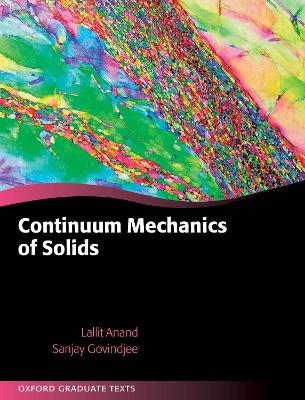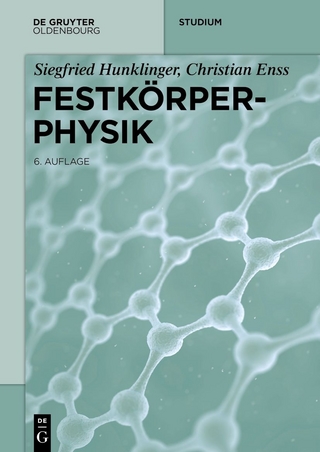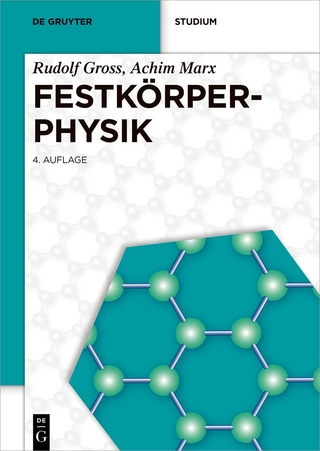
Continuum Mechanics of Solids
Oxford University Press (Verlag)
978-0-19-886472-1 (ISBN)
Continuum Mechanics of Solids is an introductory text for graduate students in the many branches of engineering, covering the basics of kinematics, equilibrium, and material response. As an introductory book, most of the emphasis is upon the kinematically linear theories of elasticity, plasticity, and viscoelasticity, with two additional chapters devoted to topics in finite elasticity. Further chapters cover topics in fracture and fatigue and coupled field problems, such as thermoelasticity, chemoelasticity, poroelasticity, and piezoelectricity. There is ample material for a two semester course, or by selecting only topics of interest for a one-semester offering. The text includes numerous examples to aid the student. A companion text with over 180 fully worked problems is also available.
Lallit Anand is the Warren and Towneley Rohsenow Professor of Mechanical Engineering at the Massachusetts Institute of Technology (MIT). His research focuses on solid mechanics, and he is widely known for his contributions to the development of large deformation plasticity theory for engineering technology. He has received numerous honors, including the Eric Reissner Medal, 1992; ASME Fellow, 2003; International Plasticity Medal, 2007; IIT Kharagpur Distinguished Alumnus Award, 2011; ASME Drucker Medal, 2014; MIT Den Hartog Distinguished Educator Award, 2017; Brown University Engineering Alumni Medal, 2018; and the Society of Engineering Science Prager Medal, 2018. He was elected to the National Academy of Engineering in 2018. Sanjay Govindjee is the Horace, Dorothy and Katherine Johnson Professor in Engineering at the University of California, Berkeley. He is known as the leading figure in modelling and computation of finitely deformable polymeric materials. He authored Engineering Mechanics of Deformable Solids (OUP, 2013), among other books. Govindjee serves as a consultant to several governmental agencies and private corporations. He is an active member in major societies such as the American Society of Mechanical Engineers and the US Association for Computational Mechanics. He is also a registered Professional Mechanical Engineer in the state of California. Noteworthy honors include a National Science Foundation Career Award, the inaugural 1998 Zienkiewicz Prize and Medal, an Alexander von Humboldt Foundation Fellowship 1999, a Berkeley Chancellor's Professorship 2006-2011. In 2018 he received a Humboldt-Forschungspreis (Humboldt Research Award).
I Vectors and Tensors
1: Vectors and tensors: Algebra
2: Vectors and tensors: Analysis
II Kinematics
3: Kinematics
III Balance Laws
4: Balance laws for mass, forces, and moments
5: Balance of energy and entropy imbalance
6: Balance laws for small deformations
IV Linear Elasticity
7: Constitutive equations for linear elasticity
8: Linear elastostatics
9: Solutions for some classical problems in linear elastostatics
V Variational Formulations
10: Variational formulation of boundary value problems
11: Introduction to the finite element method
12: Minimum principles
VI Elastodynamics, Sinusoidal Progressive Waves
13: Elastodynamics, Sinusoidal progressive waves
VII Coupled Theories
14: Linear thermoelasticity
15: Chemoelasticity
16: Linear poroelasticity
17: Chemoelasticity theory for energy storage materials
18: Linear piezoelectricity
VIII Limits to Elastic Response, Yielding and Plasticity
19: Limits to elastic response. Yielding and failure
20: One-dimensional plasticity
21: Three-dimensional plasticity with isotropic hardening
22: Plasticity with kinematic and isotropic hardening
23: Postulate of maximum dissipation
24: Some classical problems in rate-independent plasticity
25: Rigid-perfectly-plastic materials. Two extremum principles
IX Fracture and Fatigue
26: Linear elastic fracture mechanics
27: Energy-based approach to fracture
28: Fatigue
X Linear Viscoelasticity
29: Linear viscoelasticity
XI Finite Elasticity
30: Finite elasticity
31: Finite elasticity of elastomeric materials
XII Appendices
A: Cylindrical and Spherical coordinate systems
B: Stress intensity factors for some crack configurations
| Erscheinungsdatum | 14.07.2020 |
|---|---|
| Reihe/Serie | Oxford Graduate Texts |
| Zusatzinfo | 216 grayscale line and 30 color line figures |
| Verlagsort | Oxford |
| Sprache | englisch |
| Maße | 195 x 252 mm |
| Gewicht | 1670 g |
| Themenwelt | Naturwissenschaften ► Physik / Astronomie ► Festkörperphysik |
| Naturwissenschaften ► Physik / Astronomie ► Mechanik | |
| Naturwissenschaften ► Physik / Astronomie ► Strömungsmechanik | |
| Technik ► Maschinenbau | |
| ISBN-10 | 0-19-886472-8 / 0198864728 |
| ISBN-13 | 978-0-19-886472-1 / 9780198864721 |
| Zustand | Neuware |
| Haben Sie eine Frage zum Produkt? |
aus dem Bereich


